Have you ever wondered if there’s something deeper connecting us to the natural world around us? While your Enneagram number reveals the hidden motivations driving your personality, there’s a fascinating parallel world of endangered creatures whose survival instincts and behaviors mirror our own psychological patterns. These remarkable animals, teetering on the edge of extinction, display traits that align surprisingly well with each of the nine Enneagram types. From the perfectionist tendencies of certain species to the peacemaking nature of others, discovering your endangered animal match might just give you a fresh perspective on both your personality and the urgent need for wildlife conservation.
Type 1 – The Black Rhinoceros: Principled Protectors of Their Territory
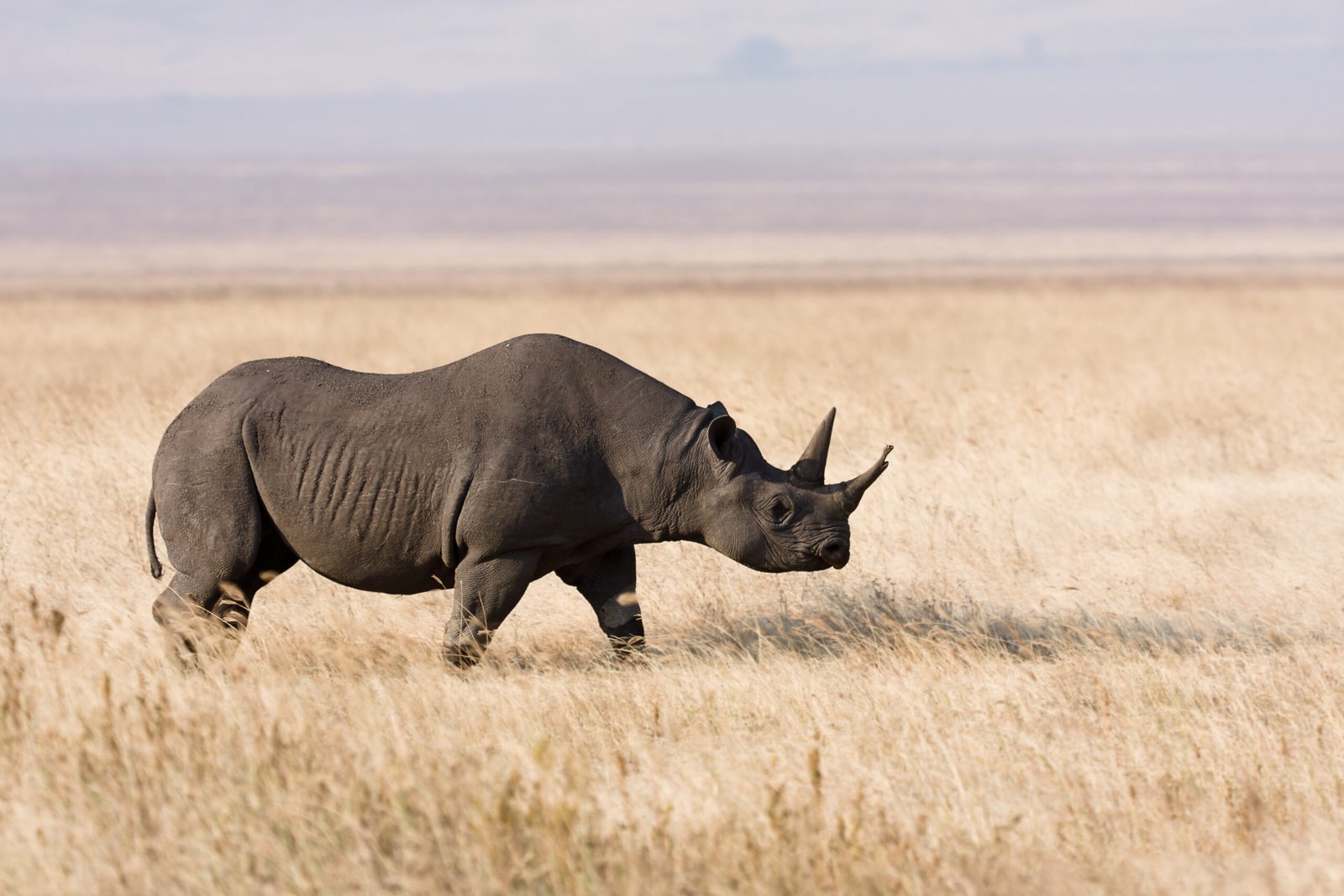
Black rhinos are classed by the IUCN as critically endangered, with an estimated 6,195 individuals in the wild. These magnificent creatures embody the Type 1’s drive for order and righteousness in their natural habitat. Like the perfectionist personality, black rhinos are incredibly particular about their territory, maintaining strict boundaries and following predictable routines for feeding and wallowing. The black rhino’s approach to life mirrors the Type 1’s internal critic perfectly. Between 1960 and 1995, black rhino populations suffered dramatic losses due to large-scale poaching, with only around 2% surviving, and today the biggest threat remains poaching for their horn. Despite facing near extinction, these animals maintain their structured lifestyle, demonstrating the same persistence and principle-driven behavior that defines Enneagram Ones. Just as Type 1s struggle with anger when things don’t meet their high standards, black rhinos are known for their fierce temperament when their ordered world is disrupted. Their solitary nature reflects the One’s tendency to withdraw when overwhelmed by the imperfections they see around them.
Type 2 – The Sumatran Orangutan: Nature’s Ultimate Helper
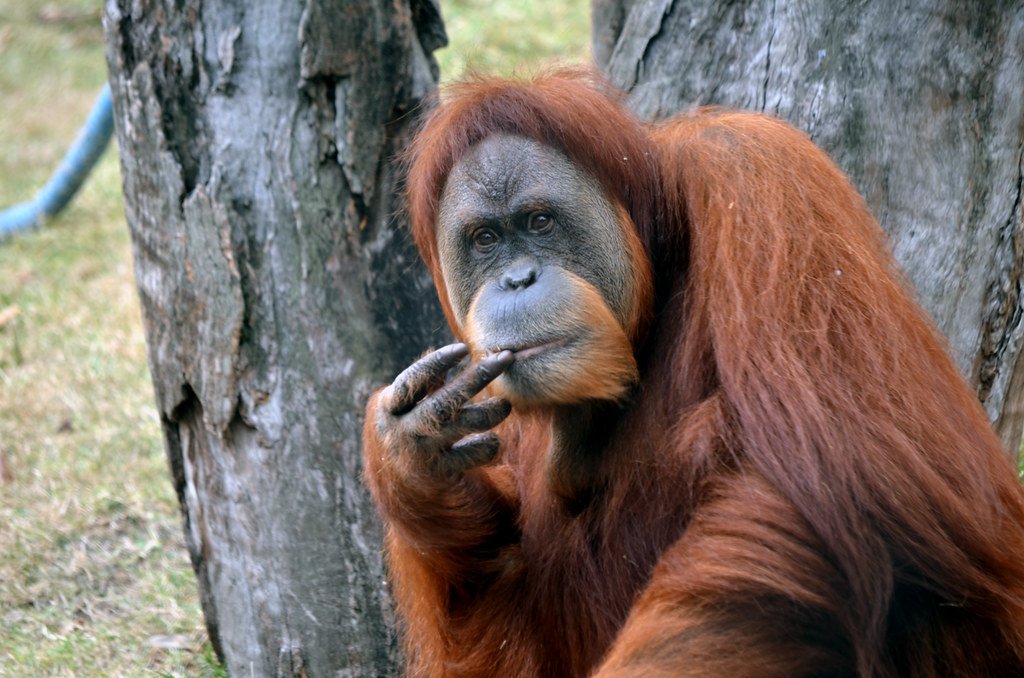
The Sumatran Orangutan is rapidly losing its forest habitat to palm oil plantations and illegal logging, yet these gentle giants continue to demonstrate the caring, nurturing qualities that define Type 2 personalities. In the wild, orangutan mothers spend up to eight years raising their young, showing an extraordinary commitment to helping others that parallels the Helper’s devotion to meeting everyone’s needs. Sumatran orangutans display the Type 2’s characteristic focus on relationships and community care. They’ve been observed sharing food with others, even when resources are scarce, and teaching younger orangutans essential survival skills. This mirrors how Type 2s often give more than they can afford, sometimes to their own detriment. Like many Type 2s who struggle to ask for help when they need it most, these orangutans face extinction partly because their habitat destruction happens quietly, without the dramatic attention that other conservation crises receive. Their gentle, giving nature makes them vulnerable to exploitation, just as Type 2 personalities can be taken advantage of by those who don’t appreciate their selfless contributions.
Type 3 – The Sumatran Tiger: Ambitious Apex Achievers
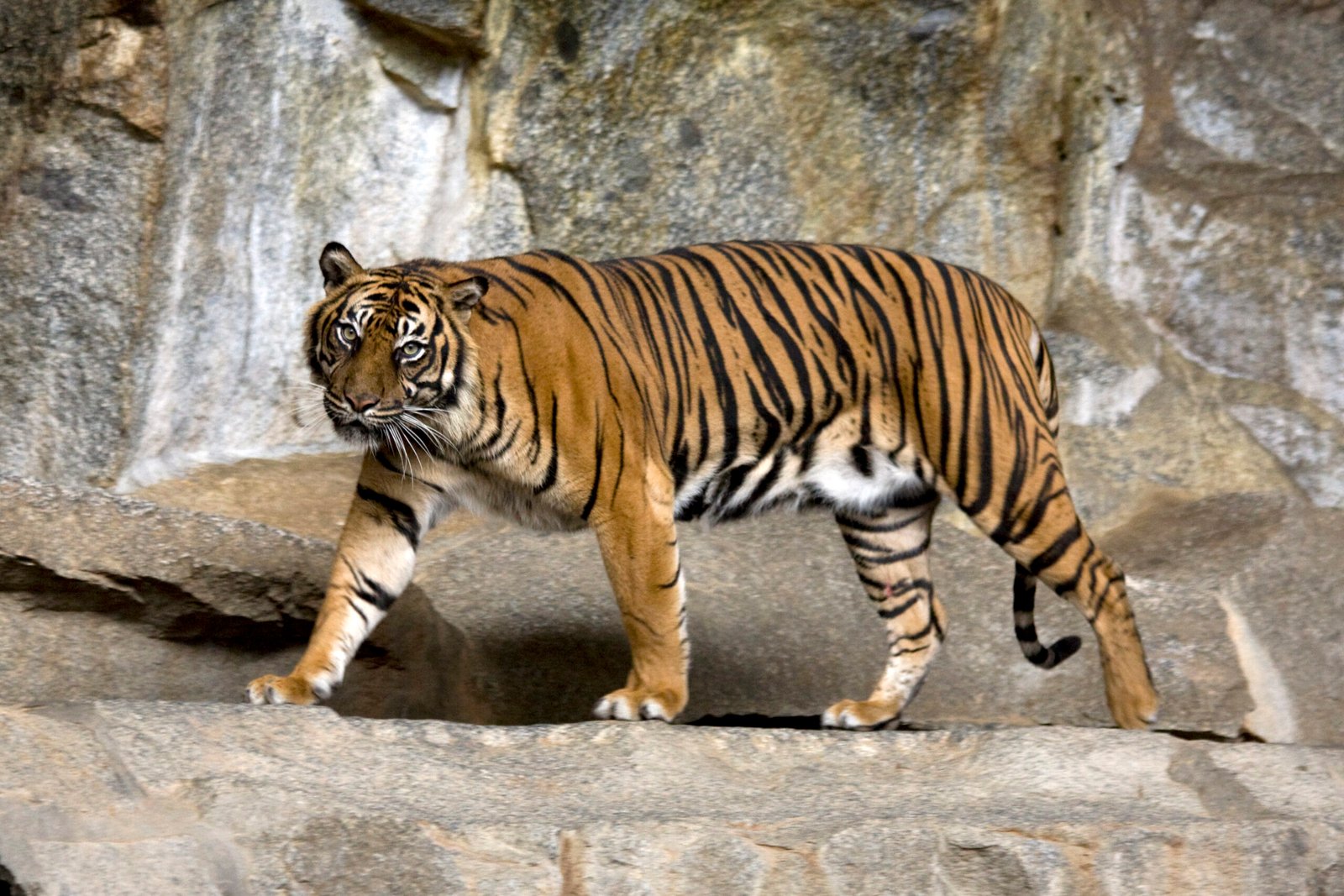
The Sumatran Tiger is the smallest of all tiger subspecies, roaming the forests of Sumatra, Indonesia, and is critically endangered due to habitat destruction, poaching, and conflict with humans. These apex predators are solitary animals with a diet that includes fish, monkeys, and deer. Like Type 3 personalities, these tigers are the ultimate achievers in their ecosystem, constantly adapting and excelling to maintain their status as top predators. The Sumatran tiger’s hunting strategy reflects the Type 3’s focus on efficiency and success. They’re incredibly goal-oriented, spending hours planning and executing perfect hunts to maintain their position in the food chain. Their adaptability to dense tropical forests mirrors how Type 3s excel at reading their environment and adjusting their image to achieve maximum impact. What makes these tigers particularly Type 3-like is their relationship with failure and image. When their territory is threatened or their hunt fails, they don’t give up – they adapt, find new strategies, and work harder to succeed. However, like Type 3s who can burn out from constant performance pressure, these tigers face extinction partly because they cannot adapt fast enough to rapidly changing human-dominated landscapes.
Type 4 – The Kakapo: Unique and Misunderstood
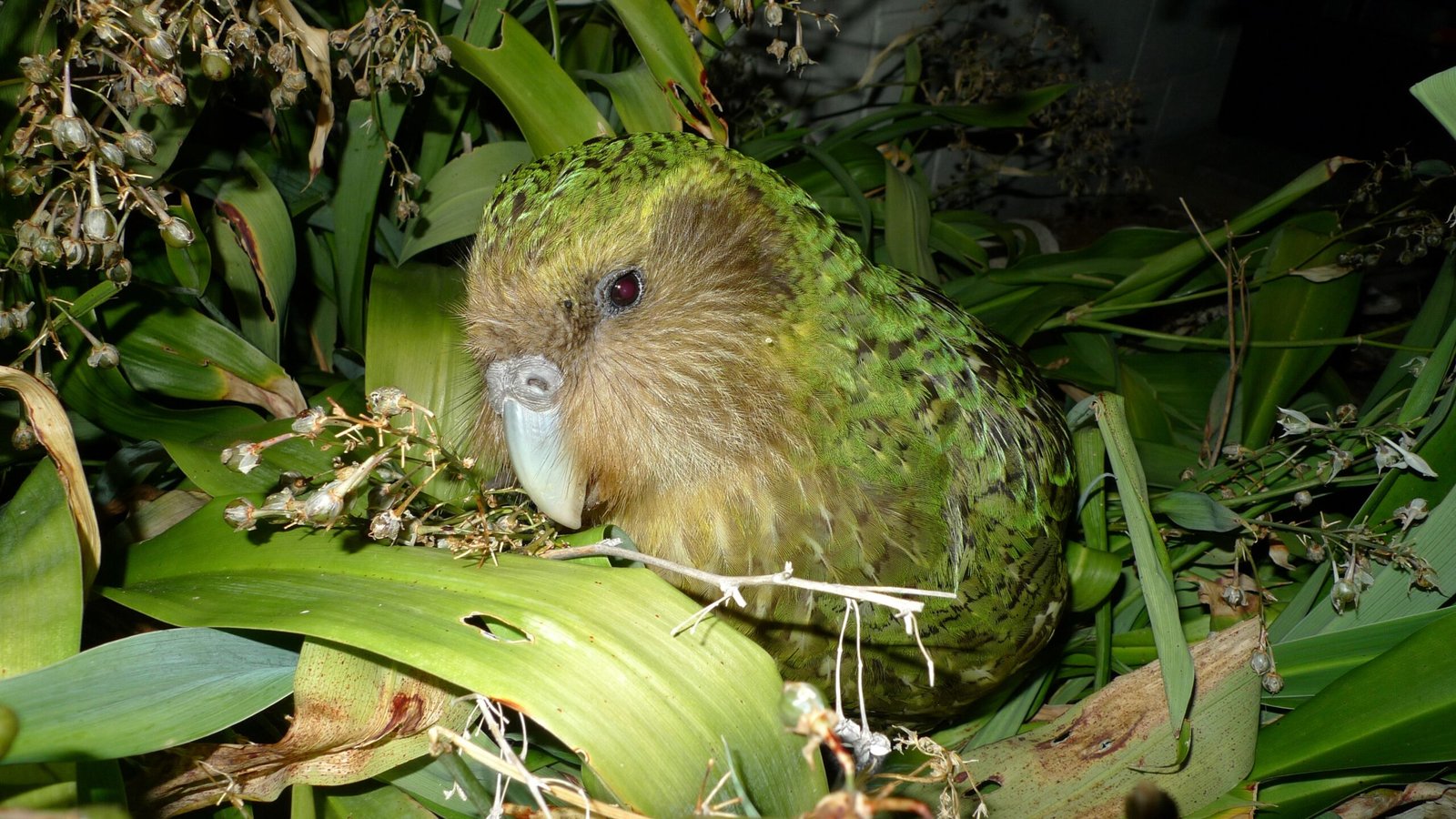
The Kakapo is a nocturnal, flightless parrot native to New Zealand. Once widespread across the country, their populations have been decimated by introduced predators and habitat destruction. The Kakapo’s unique characteristics, including its inability to fly and its distinct mating call, make it a symbol of New Zealand’s conservation efforts. These extraordinary birds embody everything that makes Type 4 personalities special – they’re entirely unique, deeply emotional, and often misunderstood by the world around them. Like Type 4s who feel fundamentally different from everyone else, kakapos are the only flightless parrots in the world. Their mating ritual involves males creating elaborate bowl-shaped arenas and producing haunting, booming calls that can be heard for miles – a dramatic display of individuality that mirrors the Type 4’s need for authentic self-expression. The kakapo’s story reflects the Type 4’s relationship with melancholy and beauty in suffering. They feed on a variety of plant material, including seeds and fruits, and conservation efforts, including predator-free island sanctuaries and a dedicated breeding program, have begun to stabilize their numbers. Their survival depends on human understanding of their unique needs, just as Type 4s thrive when others appreciate their distinctive perspective on life.
Type 5 – The Amur Leopard: Solitary Knowledge Seeker
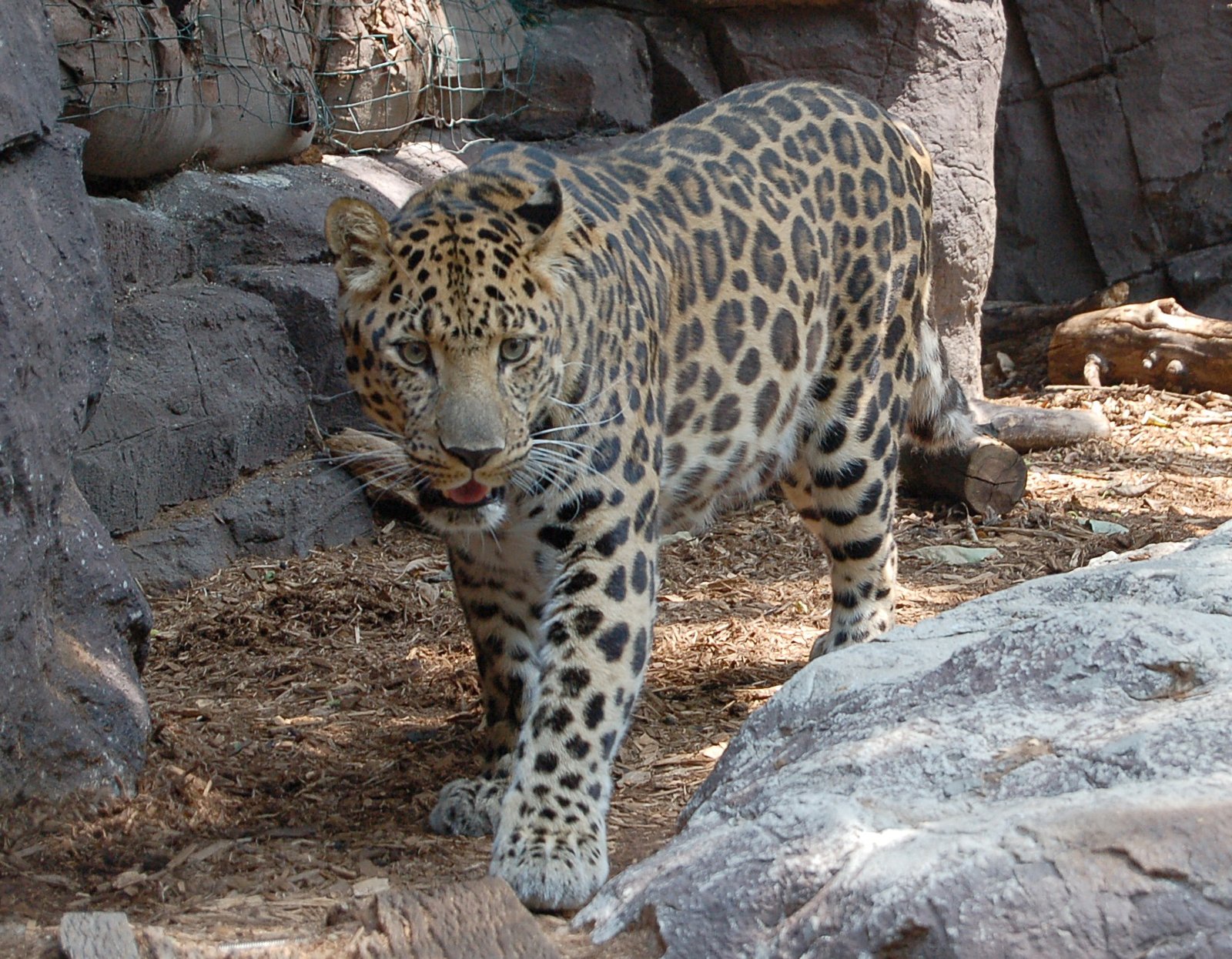
The Amur leopard is one of the rarest big cats in the world, with only around 200-250 individuals left in the wild. Although their wild population seems to be stable and increasing, these leopard subspecies are still critically endangered since 1996, and can only be found in a relatively small region of the far east of Russia and north-eastern China. These magnificent cats perfectly represent the Type 5’s tendency toward solitude, observation, and resource conservation. Amur leopards are masters of minimalism, requiring less territory than other big cats and surviving in harsh climates that would challenge other species. Like Type 5s who prefer to observe before acting, these leopards spend considerable time studying their environment, learning every detail of their territory before making moves. The remaining Amur leopards face multiple threats including habitat loss and fragmentation, prey scarcity and transportation infrastructure such as roads. Their response to these pressures mirrors the Type 5’s coping strategy – they withdraw further, become more selective about energy expenditure, and rely on their extensive knowledge of their environment to survive. Their extreme rarity reflects the Type 5’s experience of feeling like they’re the only ones who truly understand their unique perspective.
Type 6 – The North Atlantic Right Whale: Loyal but Anxious Travelers
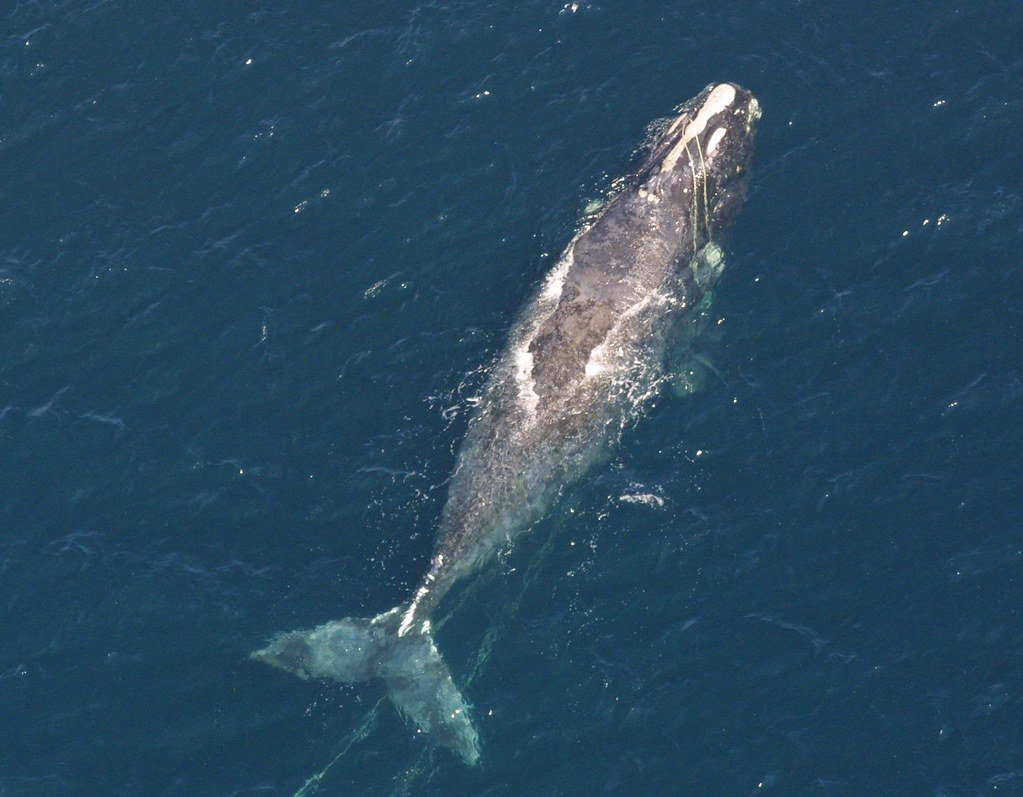
There are only about 340 North Atlantic right whales left, including only 70 calving-age females. The North Atlantic right whale is one of the world’s most endangered whale species, classed by the IUCN as critically endangered, facing threats of vessel strikes, entanglement in fishing gear, ocean noise pollution, and climate change. These gentle giants embody the Type 6’s combination of loyalty to their group and constant vigilance against potential threats. Right whales demonstrate the Type 6’s commitment to community through their complex social structures and loyalty to traditional migration routes. Like Type 6 personalities who seek security through established systems and relationships, these whales follow the same ancestral paths year after year, relying on generational knowledge for survival. The anxious nature of Type 6s is reflected in these whales’ heightened awareness of danger. 40 North Atlantic right whale mortalities have been reported so far in 2024, alongside 34 serious injuries, and 65 morbidities. Their survival depends on successfully navigating an ocean full of threats that didn’t exist when their migration patterns evolved, mirroring how Type 6s must constantly assess and respond to an increasingly complex world.
Type 7 – The Pangolin: Enthusiastic Explorers Under Threat
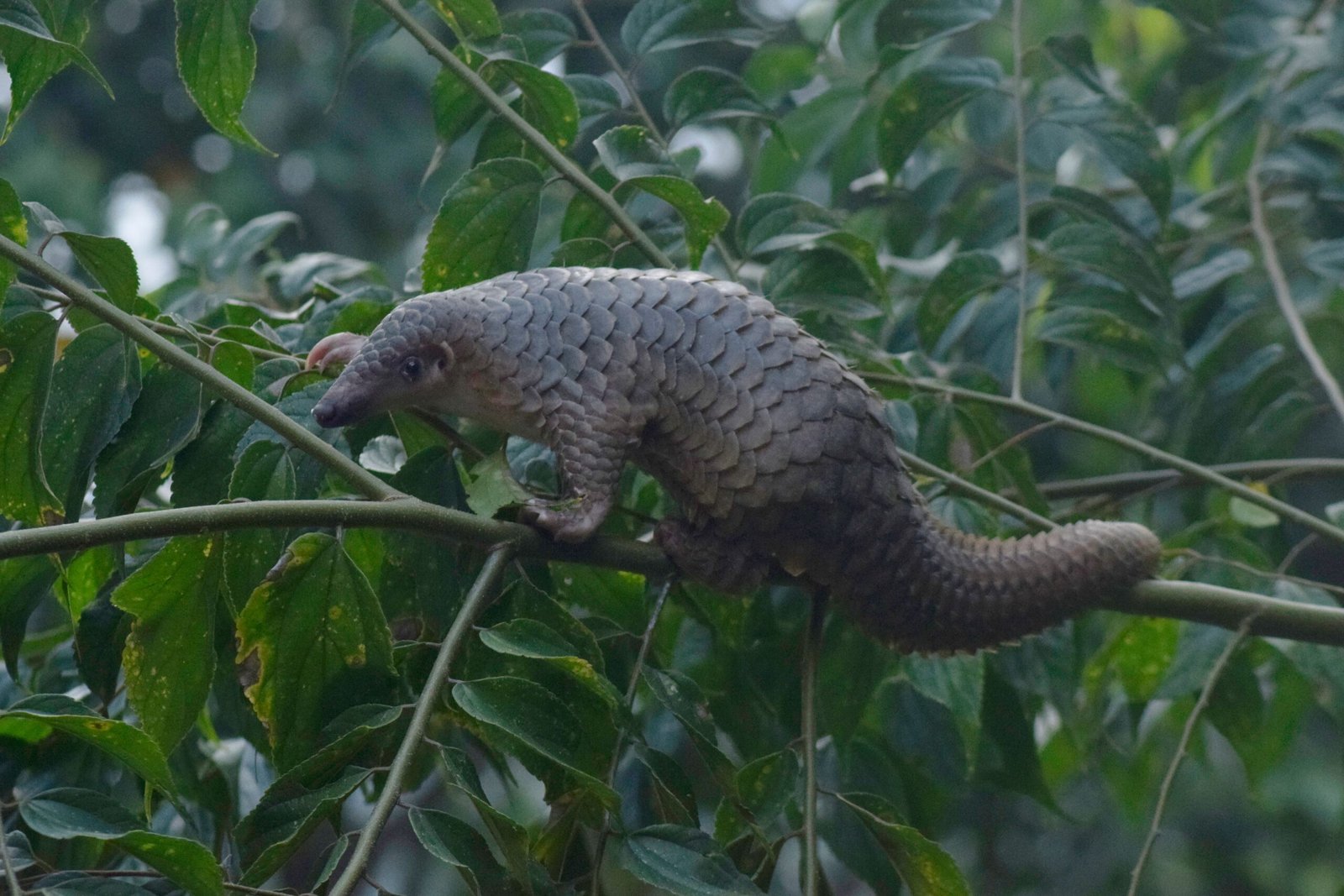
The Pangolin, often referred to as the world’s most trafficked mammal, is hunted for its scales and meat, driven by false beliefs in their medicinal properties. Despite this threat, pangolins embody the Type 7’s enthusiasm for exploration and their ability to find joy even in challenging circumstances. These unique creatures are always on the move, constantly foraging and exploring new territories with an almost childlike curiosity about their environment. Like Type 7s who struggle with being trapped or limited, pangolins are incredibly resourceful escape artists. When threatened, they can roll into a perfect ball, but they prefer to dig elaborate burrow systems that give them multiple escape routes – always keeping their options open, just like the enthusiastic Type 7 personality. International trade in Sunda pangolins is illegal, yet multiple huge seizures have been made in recent decades, involving thousands of animals, making the Sunda pangolin increasingly rare across much of its former range. Their plight reflects how Type 7s’ openness and trust in the world can make them vulnerable to those who would exploit their optimistic nature.
Type 8 – The Cross River Gorilla: Powerful but Protective Leaders
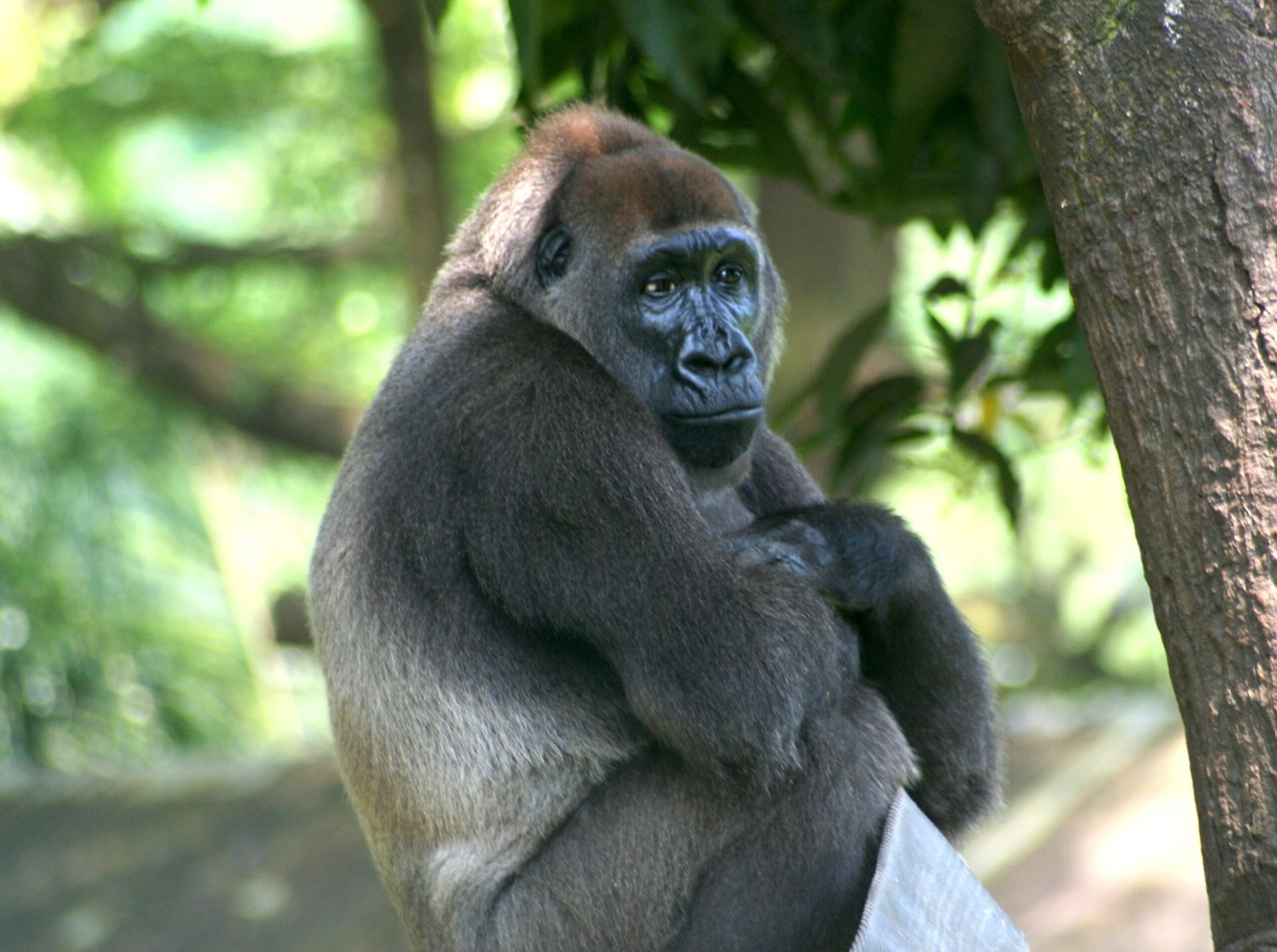
Cross River Gorillas are critically endangered due to habitat destruction and poaching. These gorillas have a varied diet that includes fruit, leaves, and stems, and their shy nature has made their study difficult. Despite their cautious behavior around humans, these magnificent primates demonstrate the Type 8’s natural leadership and protective instincts when it comes to their family groups. Cross River gorillas exhibit the Type 8’s combination of strength and vulnerability. The dominant silverback males show classic Type 8 traits – they’re intensely protective of their group, willing to face any threat head-on, and naturally command respect from other group members. However, like Type 8s who often hide their softer emotions, these gorillas show remarkable gentleness with their young. Conservation efforts are focused on habitat protection, anti-poaching measures, and community-based conservation programs. Their survival story mirrors the Type 8’s relationship with power and justice – they need space to lead and protect their families, but their strength makes them targets for those who see them as threats rather than guardians of their forest home.
Type 9 – The Yangtze Finless Porpoise: Peaceful Mediators of the River
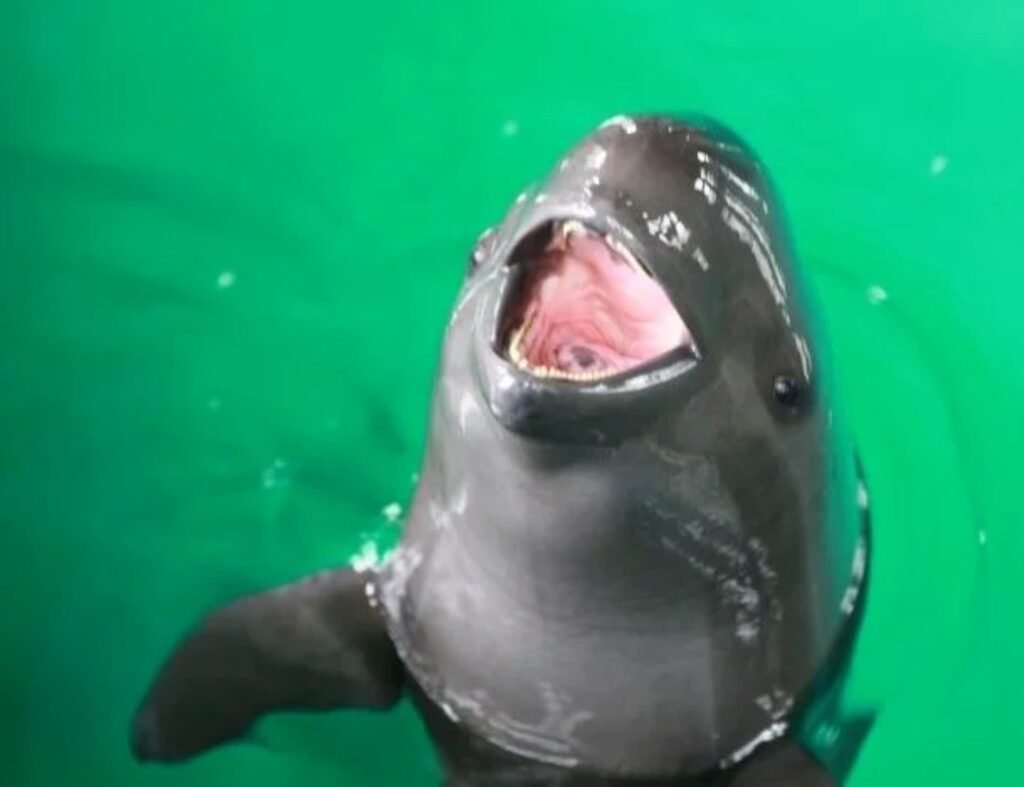
The Yangtze Finless Porpoise is the odd one out of its family as it is the only living freshwater porpoise found in the world. This aquatic mammal currently resides in the Yangtze River in China and is listed as a critically endangered species. These gentle creatures embody everything that makes Type 9 personalities special – they’re naturally peaceful, prefer harmony in their environment, and have an innate ability to go with the flow. Known for their intelligence and playful behavior, these porpoises have a diverse diet of fish and crustaceans, and like Type 9s who can see multiple perspectives, they’re adaptable enough to thrive in both shallow and deep waters, adjusting their behavior to maintain harmony with their changing environment. The porpoise’s endangered status reflects the Type 9’s struggle with inertia and avoidance. Years of environmental degradation, overfishing and water pollution in the region had detrimental impacts, and once upon a time, Yangtze river dolphins used to live alongside finless porpoises, but there haven’t been any freshwater dolphin sightings since 2002. This could be yet another stark reminder of what may follow for the Yangtze finless porpoise. Their peaceful nature makes them vulnerable to environmental changes they’re too gentle to resist, just like how Type 9s sometimes struggle to assert themselves when action is urgently needed.
Finding Your Conservation Connection

The International Union for Conservation of Nature classifies over 9,000 species as critically endangered, while more than 157,000 species have been assessed for The IUCN Red List. Each of these endangered animals offers us a mirror into our own personality patterns, showing us both our greatest strengths and our most vulnerable spots. Whether you identify with the black rhino’s principled territoriality or the kakapo’s unique approach to life, these connections remind us that we’re all part of the same fragile ecosystem. The Earth is currently experiencing its sixth major extinction event. One million species globally are at risk of extinction in the next few decades, including 27 percent of the world’s mammals, 41 percent of amphibians, 37 percent of sharks and rays, and 21 percent of reptiles. Understanding our personality through these endangered animals isn’t just about self-discovery – it’s about recognizing our responsibility to protect the incredible diversity of life that shares our planet. Your Enneagram animal match shows you that personality isn’t just a human trait – it’s woven throughout the natural world in ways that are both beautiful and heartbreaking. These creatures face extinction not because of their personality flaws, but because of ours. The same traits that make them remarkable also make them vulnerable in a world increasingly dominated by human activity. What will you do with this knowledge?




